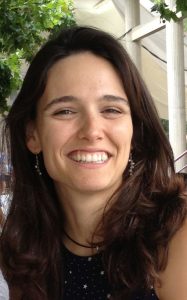August 14, 2017
IST Austria expands to include chemistry
Maria Ibáñez from ETH Zurich will join the Institute of Science and Technology as the first chemistry professor | Her research group will focus on material science
Chemistry is what connects life sciences with the physical sciences – two of the major research fields that have been represented on campus for several years now. With the hiring of a first chemistry professor, the Institute of Science and Technology (IST Austria) in Klosterneuburg seeks to bring the interdisciplinary cooperation to the next level. Chemistry will serve as a bridge between the areas; not only in research, but also in the training of graduate students. The first chemistry group will be led by assistant professor Maria Ibáñez, an expert in the development and characterization of nanostructured materials, who will join IST Austria in August 2018.
Maria Ibáñez obtained her PhD from the University of Barcelona where she started her research on nanoparticle synthesis and on the properties and functionality of the resulting nanoparticles. As a research fellow at ETH Zurich she currently focuses on nanoparticle surface tailoring for energy conversion applications. Her expertise in material science, inorganic chemistry, and energy harvesting has the potential to greatly enhance the interdisciplinary collaboration, which is one of the core principles of IST Austria.
Ibáñez and her group will apply the strategy of assembling precisely engineered nanocrystal building blocks to produce novel functional materials with nanometer scale control and develop fundamental understanding of structure-property relationships. Their work is based on the ability to produce high quality nanocrystals with well-defined properties by controlling material formation from the initial combination of atoms into clusters to the growth of highly homogeneous nanoscale units without high capital cost equipment or complex processing.
Tom Henzinger, President of IST Austria, comments: “Establishing chemistry as the connection between the life sciences and the physical sciences was a crucial step in the growth and success of our scientific enterprise, and I am very happy that we were able to attract Maria Ibáñez, an excellent researcher in material science and inorganic chemistry.”




